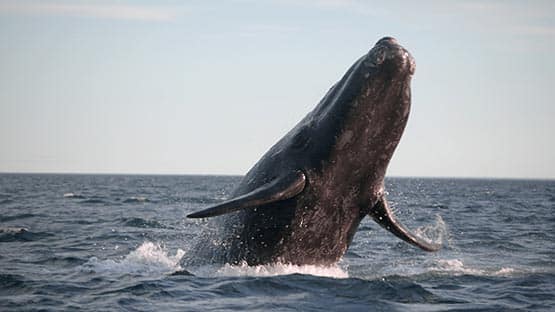
Virginia Tech associate athletics director of sports medicine Mike Goforth knew a life-threatening situation was unfolding on the football field in Cincinnati on Jan. 2 when medical professionals started using an automated external defibrillator, or AED.
Moments after Buffalo Bill’s safety Damar Hamlin’s collapse, sports medicine staff at Virginia Tech started exchanging text messages.
“You’ve got about a 5 percent chance of surviving that,” said Goforth. “But with intervention, it goes up to 60 percent, which still isn’t great. But the fact that we’re having this conversation with Damar still alive is incredible and a testimony.”
Hamlin spent a week at the University of Cincinnati Medical Center before being transferred to a hospital in Buffalo. Nine days after suffering his cardiac arrest, he received his discharge.
Importance of athletic trainers
Not all the heroes wear jerseys and helmets. In the case of Hamlin, the heroes stood on the sideline in team apparel, ready and willing to save a life.
As reported in Augusta Free Press, athletic trainers from youth to high school to collegiate to pro sports may appear to just tape ankles and bandage cuts, but that’s only a fraction of what they actually do.
In the Virginia Tech athletics department, Goforth, and head team physician and Chief Medical Officer Mark Rogers, oversees a staff of more than 20, with at least one full-time certified athletic trainer devoted to each of the school’s varsity sports.
Each trainer needs to know CPR, how to use the AED and how to administer first aid to be certified. Their certifications are renewed annually. In addition, they need to know everything from preseason physicals to emergency care, injury treatment and diagnosis, clinical examinations, therapeutic interventions, when and how to refer, as well as administration and professional legal responsibilities.
Athletic trainers must complete an accredited curriculum and pass a national certification exam to become certified athletic trainers.
Training is paramount when a medical crisis arises.
In April 2010, Allan Chaney, a Virginia Tech men’s basketball player, went into cardiac arrest during an individual workout. The women’s basketball athletic trainer at the time, Amy Kunigonis, used the AED to shock Chaney’s heart back into rhythm. Her quick actions more than likely saved Chaney’s life.
Importance of emergency action plans
Athletic trainers in the Virginia Tech athletics department also oversee the department’s emergency action plans if a student-athlete suffers an injury that requires a hospital visit. These plans exist for each of the athletics department’s venues – game venues, practice facilities, weight rooms, meeting rooms and the student-athlete performance center.
The plans are thorough and include input from people with the Virginia Tech Rescue Squad, Virginia Tech police, Blacksburg police, and Blacksburg Rescue Squad, along with those from Rhino Sports and Entertainment Services, which manages game day events for the department. These plans include information such as where the ambulance parks during games, who travels with the student-athlete to the hospital, who notifies the parents and who takes the parents to the hospital.
For practices, athletic trainers must know exactly where an ambulance can enter onto the field or park at an indoor practice facility.
“I think a lot of people think when the athletic trainer goes out to practice, we’re just thinking about ankles and knees, but we’re always surveying to see ‘OK, is there a truck blocking this gate?’” said Brett Griesemer, the head football athletic trainer. “You might not notice it, but we’re all looking around. Is there construction happening on the dining hall upstairs? How does that affect our emergency action plan? Is there construction at the new baseball field? Where can the ambulance get in? Where can they access?
“That’s something that that we think about constantly when we go out to practice or a game. That’s something that we’re constantly discussing. If this happens, what’s going to be our plan?”
The sports medicine staff has put its emergency action plans to use several times over the years.
For example, in 2012, safety Michael Cole injured his neck in a football game against Florida State at Lane Stadium.
Goforth and his staff put Cole on a spine board, brought the ambulance onto the field, and took him to Lewis Gale Hospital Montgomery for treatment. Doctors diagnosed Cole with a neck sprain that ultimately led to him giving up the sport.
“We actually had an after-action meeting at the hospital with our staff, EMS, radiology and everybody involved,” Goforth said. “We wanted to go over what we could do better.”
Future of athletic training
Currently, the demand for athletic trainers outweighs the supply. In addition to working in collegiate and professional sports settings, athletic trainers are hired by high schools, clinics and military academies.
“I see athletic training significantly growing in the non-sports domains and in the military,” said Renee Eaton, the undergraduate program director in the Department of Human Nutrition, Foods, and Exercise. “They’ve found that athletic trainers can help with performance, injury reduction, and lost work time. Some of the new areas for athletic trainers include private corporations, occupational health, performing arts and public safety.”
Many graduates seek careers as physical therapists or physician’s assistants because of better salaries, and in some situations, better hours.
Athletic training as a career does offer certain perks. The demand ensures job security. The profession can provide the welcoming feeling of helping others. Those who work in sports get to enjoy high-adrenaline environments. And no day is ever routine.
One may even get to be a hero, though as the Damar Hamlin incident showed, one in this profession needs to be ready when that opportunity presents itself.
“We’re very thankful something like that has never happened to us,” Goforth said. “We pray it doesn’t happen to us — and we pray that we’ll be ready for if it does.”
Related stories
Scary NFL injury highlights need for CPR, AED training at youth-sports level
Former NFL player on Damar Hamlin, UVA football tragedy, mental health
Athletic trainer recalls injury to varsity baseball player similar to one on ‘Monday Night Football’










